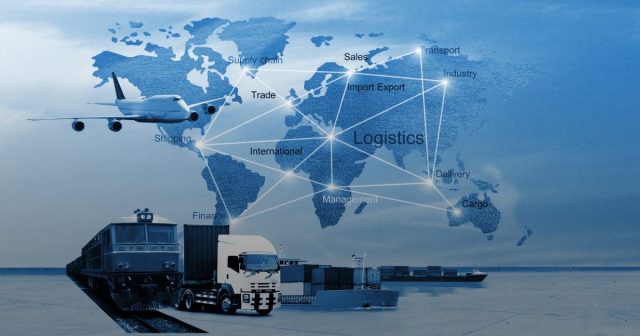
How Vendor Managed Inventory (VMI) Strengthens Supply Chain Resilience and Collaboration
To optimize inventory management, retailers and suppliers are increasingly turning to Vendor Managed Inventory (VMI) tools that transfer the responsibility…
Generix Ushers in a New Era of Intelligent Commerce for Retailers with AI-Driven Innovation Read the press release

A Transportation Management System (TMS) is a software solution designed to help businesses plan, execute, and optimize the physical movement of goods. It centralizes transportation operations, providing visibility and control over the entire supply chain. A TMS is crucial for selecting carriers, managing transportation routes, and ensuring timely delivery of goods.
A TMS enhances operational efficiency and reduces costs by automating the various facets of transportation management. It integrates with other key business systems, such as Enterprise Resource Planning (ERP) and Warehouse Management System (WMS), to create a seamless logistics management framework. This integration ensures that information flows smoothly across the supply chain, enabling better decision-making and operational control.
A Transportation Management System (TMS) is a critical component in logistics, designed to streamline the planning, execution, and optimization of the physical movement of goods. It serves as a central hub for managing transportation operations, offering visibility and control over the entire logistics network.

A TMS operates by integrating with other business systems such as ERP (Enterprise Resource Planning) and WMS (Warehouse Management System). Here’s a breakdown of how a TMS typically functions:
A TMS helps businesses select the most efficient and cost-effective mode of shipment and carriers. It uses algorithms to optimize routes, considering factors like distance, fuel costs, and delivery windows. This process includes load planning, which involves consolidating shipments and determining the best routes to minimize costs and transit times.
During the planning phase, the TMS evaluates different transportation options and selects the most suitable carriers based on predefined criteria such as cost, delivery time, and reliability. The system takes into account real-time data and historical performance metrics to make informed decisions. By optimizing load planning and route selection, a TMS helps businesses achieve significant cost savings and improve service levels.
Once the planning phase is complete, the TMS facilitates the execution of transportation plans. This includes booking shipments, tendering loads to carriers, and tracking freight in real-time. By automating these tasks, a TMS reduces manual errors and enhances operational efficiency.
The execution phase involves coordinating with carriers, generating shipping documents, and ensuring compliance with regulatory requirements. The TMS provides real-time updates on shipment status, enabling businesses to monitor the progress of their deliveries and respond to any issues that may arise. This visibility into the transportation process helps in maintaining high levels of customer satisfaction by ensuring timely and accurate deliveries.
Optimization is a continuous process in a TMS. The system uses data analytics and key performance indicators (KPIs) to monitor transportation performance. This includes tracking delivery times, transportation costs, and carrier performance. The insights gained from this data help businesses refine their transportation strategies and improve overall efficiency.
A TMS continually assesses and adjusts transportation plans based on real-time conditions and performance metrics. It identifies areas for improvement and implements changes to enhance efficiency and reduce costs. This ongoing optimization ensures that businesses can adapt to changing market conditions and maintain a competitive edge. By leveraging advanced analytics, a TMS provides actionable insights that drive continuous improvement in transportation operations.
Route optimization is a critical feature that ensures goods are transported via the most efficient routes. This reduces fuel consumption, lowers transportation costs, and improves delivery times. By using advanced algorithms, a TMS can analyze various factors such as traffic conditions, road closures, weather forecasts, and historical data to determine the best possible routes for each shipment. This not only saves time and money but also reduces the environmental impact of transportation activities by minimizing fuel usage.
A TMS provides real-time visibility into the movement of goods. Businesses can track shipments, monitor carrier performance, and receive alerts about potential delays. This visibility helps in proactive decision-making and enhances customer satisfaction. Real-time tracking allows companies to keep their customers informed about the status of their shipments, leading to improved transparency and trust. Additionally, it enables businesses to quickly address and resolve any issues that may arise during transit, thereby minimizing disruptions and ensuring timely deliveries.
Managing relationships with carriers is simplified with a TMS. The system stores detailed information about carriers, including rates, performance history, and capacity. This enables businesses to select the best carriers for each shipment and negotiate better rates. By maintaining a comprehensive database of carrier information, a TMS helps businesses manage contracts, track carrier performance, and ensure compliance with service level agreements. This centralized approach to carrier management reduces administrative burdens and enhances the efficiency of transportation operations.
A TMS automates the freight audit and payment process, ensuring that invoices are accurate and payments are made on time. This reduces administrative overhead and minimizes the risk of billing errors. Automated freight auditing involves cross-referencing shipping invoices with actual shipment data to verify the accuracy of charges. By streamlining this process, a TMS helps businesses avoid overpayments, identify discrepancies, and ensure that payments are processed promptly. This not only saves time and money but also improves relationships with carriers by ensuring timely and accurate payments.
Advanced analytics and reporting capabilities allow businesses to gain insights into their transportation operations. These insights help in identifying trends, measuring performance, and making decisions to optimize the supply chain. A TMS provides a range of analytical tools and reports that enable businesses to monitor key performance indicators (KPIs), track transportation costs, and evaluate carrier performance. By leveraging these insights, companies can identify areas for improvement, implement cost-saving measures, and enhance the overall efficiency of their transportation operations.
By optimizing routes and consolidating shipments, a TMS significantly reduces transportation costs. Automated processes also reduce the need for manual labor, leading to further savings. The system’s ability to select the most cost-effective shipping options, negotiate better carrier rates, and minimize fuel consumption contributes to substantial cost reductions. Additionally, a TMS helps businesses avoid costly errors and inefficiencies, further enhancing their bottom line.
Automation of transportation planning, execution, and optimization improves operational efficiency. Businesses can handle higher volumes of shipments with the same resources, leading to increased productivity. A TMS streamlines the entire transportation process, from order creation to delivery, reducing the time and effort required to manage shipments. This allows businesses to focus on core activities, such as customer service and strategic planning, rather than getting bogged down in administrative tasks.
A TMS enhances customer service by ensuring timely and reliable deliveries. Real-time tracking and proactive communication with customers about shipment status improve satisfaction and loyalty. By providing accurate and up-to-date information on shipment progress, a TMS helps businesses meet customer expectations and build stronger relationships. The system’s ability to quickly resolve issues and prevent delays further contributes to improved customer satisfaction and loyalty.
A TMS is scalable, making it suitable for businesses of all sizes. Cloud-based TMS solutions are particularly beneficial for small and medium-sized businesses, offering advanced features without significant upfront investment. As businesses grow, a TMS can easily accommodate increased volumes of shipments and expanded operations. The flexibility of cloud-based solutions also allows businesses to quickly adapt to changing market conditions and customer demands, ensuring continued efficiency and competitiveness.
A TMS helps businesses comply with transportation regulations and manage risks associated with shipping goods. It ensures that all necessary documentation is in place and provides visibility into potential issues that could affect delivery timelines. By automating compliance checks and maintaining accurate records, a TMS helps businesses avoid fines and penalties. Additionally, the system’s real-time visibility and reporting capabilities enable proactive risk management, allowing businesses to address potential problems before they escalate.
A Transportation Management System (TMS) is an essential tool for businesses looking to streamline their transportation operations, reduce costs, and improve efficiency. By providing real-time visibility, route optimization, and comprehensive analytics, a TMS enhances the overall performance of the supply chain. Implementing a TMS requires careful planning and integration with existing systems, but the benefits it offers make it a valuable investment for any business involved in logistics and transportation.

To optimize inventory management, retailers and suppliers are increasingly turning to Vendor Managed Inventory (VMI) tools that transfer the responsibility…

In an ever-evolving logistics environment, agile and precise warehouse resource management is essential to remain competitive. With increasing volumes driven…

France’s electronic invoicing reform relies on a Y-architecture, where Partner Dematerialization Providers (PDPs) play a central role in issuing and…

Work with our team to build your ideal supply chain software stack and tailor it to your unique business needs.